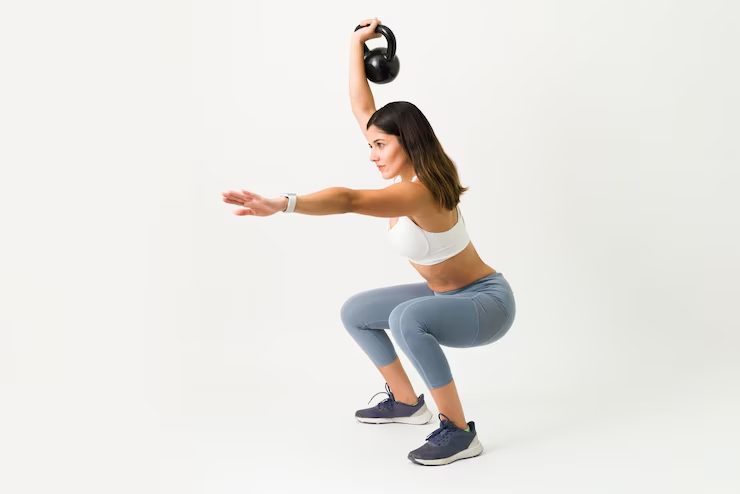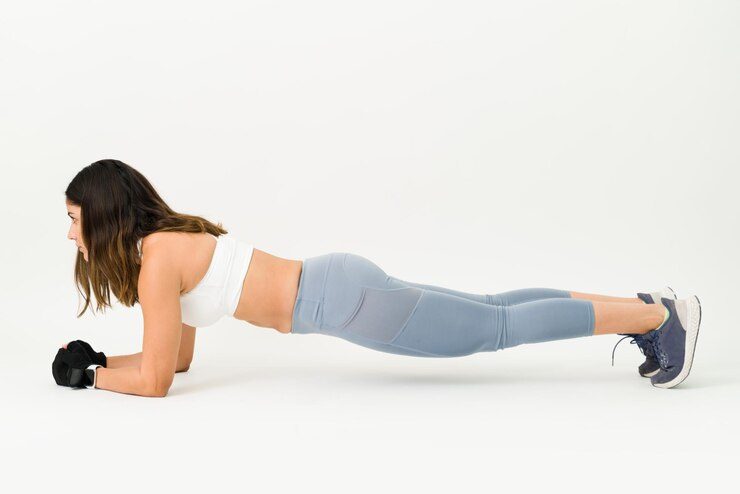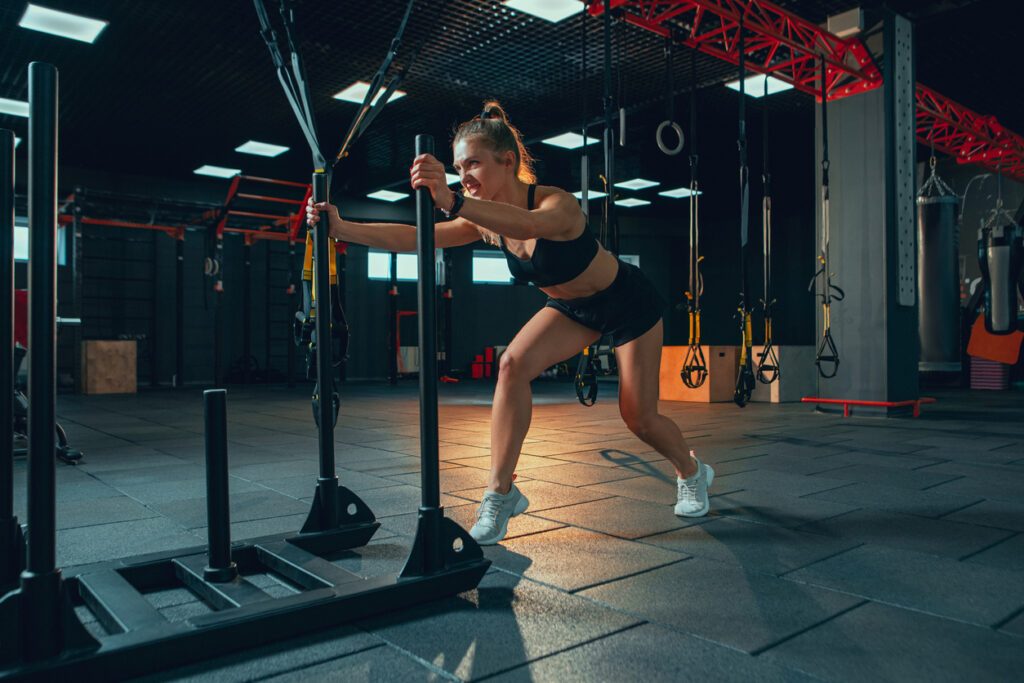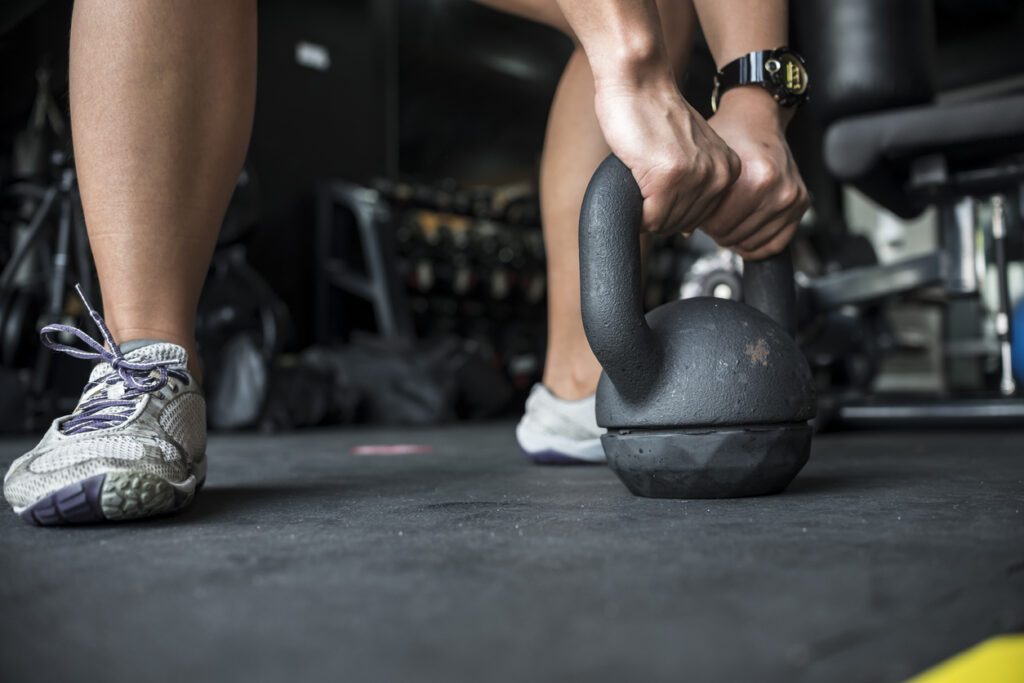
Summary
Welcome / Welcome / Tips for getting started / Combien d’exercice par muscle en HIIT pour des résultats optimaux
Combien d’exercice par muscle en HIIT pour des résultats optimaux
Vous vous demandez combien d’exercices par muscle faire en HIIT pour optimiser vos séances ? Cet article vous apporte des réponses précises et pratiques. En quelques minutes, découvrez comment structurer vos entraînements efficacement.
L’importance de cibler chaque groupe musculaire
Le HIIT est un excellent moyen de cibler chaque groupe musculaire tout en maximisant vos résultats. Nous vous détaillons le nombre d’exercices recommandés pour chaque groupe musculaire, et comment les intégrer à votre routine.
Pour obtenir des résultats optimaux en HIIT (High-Intensity Interval Training), il est crucial de cibler chaque groupe musculaire de manière équilibrée. L’équilibre musculaire permet non seulement de développer une silhouette harmonieuse, mais aussi d’éviter les déséquilibres qui peuvent causer des douleurs et des blessures. En intégrant des exercices pour tous les groupes musculaires, vous assurez un développement uniforme et une meilleure posture.
Injury prevention and performance improvement
By practicing exercises that work each muscle, you strengthen weak areas and avoid overloading specific muscles. This reduces the risk of common injuries, such as tendonitis or sprains. Additionally, a balanced body functions more efficiently, which improves your overall performance during your HIIT sessions. In short, targeting each muscle group is the key to a safe, effective and sustainable workout.
Combien d’exercices par muscle en HIIT ?
En HIIT, il est essentiel de structurer vos séances pour cibler efficacement chaque groupe musculaire. Cela vous permet de maximiser les bénéfices tout en évitant le surentraînement. Voici une approche générale pour déterminer le nombre d’exercices par muscle.
Distribution by large muscle groups
Lower limbs: 2-3 exercises The legs are fundamental in HIIT sessions because they support most intense exercises. Here are some recommended exercises:
- Squats : A great exercise for the quads, hamstrings and glutes.
- Lunges (fentes) : Idéal pour travailler les mêmes muscles tout en améliorant l’équilibre.
- Jump squats : Add a cardio component while intensely targeting the leg muscles.
Torso and arms: 2-3 exercises Pour le haut du corps, il est crucial d’inclure des exercices qui engagent plusieurs muscles simultanément :
- Pumps : Targets the pectorals, triceps and shoulders.
- Burpees : A complete exercise that works the torso, arms and includes a cardio component.
- Dips : Excellent for the triceps and chest muscles.
Core (abdominals and lumbar): 1-2 exercises A strong core is essential to maintain good posture and prevent injuries:
- Plank : Targets the abdominals, obliques and back muscles.
- Russian twists : Help strengthen the obliques and abdominals.
Example of a complete HIIT session
To illustrate, here is how to structure a 20-30 minute HIIT session:
- Warm-up (5 minutes) : Jumping jacks, high knees.
- Main circuit (15-20 minutes) :
- Squats (40 seconds work, 20 seconds rest)
- Push-ups (40/20)
- Jump squats (40/20)
- Burpees (40/20)
- Board (40/20)
- Lunges (40/20)
- Dips (40/20)
- Russian twists (40/20)
- Return to calm (5 minutes) : Static stretching, deep breathing.
Optimiser le nombre d’exercices par muscle en HIIT
Pour optimiser le nombre d’exercices par muscle en HIIT, plusieurs facteurs doivent être pris en compte afin d’assurer un entraînement efficace et sûr.
La durée de votre séance influence directement le nombre d’exercices que vous pouvez intégrer. Pour une séance de 20 à 30 minutes, il est recommandé de choisir 6 à 8 exercices différents, avec des intervalles de travail et de repos bien définis. Cela permet de maintenir une haute intensité tout en garantissant une récupération suffisante.
Votre niveau de forme physique joue un rôle crucial dans la détermination du nombre d’exercices. Les débutants devraient commencer avec moins d’exercices et des intervalles plus courts, tandis que les pratiquants plus avancés peuvent se permettre d’augmenter le nombre et l’intensité des exercices. Par exemple, un débutant peut faire 1 à 2 exercices par groupe musculaire, tandis qu’un athlète confirmé peut en inclure 3 ou plus.
Vos objectifs d’entraînement (perte de poids, gain musculaire, amélioration de l’endurance) dictent également le nombre d’exercices à effectuer. Pour la perte de poids, privilégiez des exercices combinant cardio et musculation, tandis que pour le gain musculaire, focalisez-vous sur des exercices de résistance plus intenses.
Techniques pour maximiser l’efficacité
Compound exercises, which engage multiple muscle groups at once, are particularly effective in HIIT. For example :
- Burpees : Combination of push-ups, jumps and squats.
- Thrusters : Squats suivis d’une poussée des haltères au-dessus de la tête.
These exercises maximize working time and increase calorie expenditure.
Variation in working and rest times Adapting work and rest intervals based on your fitness level and goals is crucial to optimizing your sessions. For example :
- Beginners : 30 seconds of work, 30 seconds of rest.
- Intermediaries : 40 seconds of work, 20 seconds of rest.
- Advances : 50 seconds of work, 10 seconds of rest.
By adjusting these settings, you can gradually intensify your sessions.
Common mistakes to avoid
Surcharge d’exercices
L’un des pièges les plus fréquents en HIIT est la surcharge d’exercices. Il est tentant de penser que plus d’exercices mèneront à de meilleurs résultats, mais cela peut conduire au surentraînement. Le surentraînement se manifeste par une fatigue excessive, des douleurs musculaires persistantes, et une diminution des performances. Cela peut également affaiblir votre système immunitaire et augmenter le risque de blessures.
La récupération est essentielle pour permettre à vos muscles de se réparer et de se renforcer. Ne pas respecter des périodes de repos suffisantes entre les séances peut annuler vos efforts et nuire à votre progression. Il est recommandé d’alterner les jours d’entraînement intense avec des jours de repos ou des séances d’exercice léger.
Neglect of certain muscle groups
Ignoring certain muscle groups can create body imbalances. For example, focusing your efforts only on the torso and neglecting the legs can lead to postural problems and reduce your overall performance. Unbalanced training can also cause pain and injury due to overloading the most used muscles.
To avoid these imbalances, it is crucial to plan sessions that include exercises for all major muscle groups. Here are a few tips :
- Weekly planning : Distribute your sessions so as to cover all muscle groups over a week. For example, work your legs one day, your torso and arms the next, and your core another day.
- Compound exercises : Incorporate exercises like squats, deadlifts and burpees that work multiple muscle groups at once.
- Track your progress : Keep a journal of your sessions to ensure that you are not neglecting any muscle groups and that you are varying your exercises sufficiently.
By avoiding these common mistakes, you can maximize the benefits of your HIIT sessions while minimizing the risk of injury. A balanced and conscious approach is the key to effective and sustainable training.
Conclusion
Cibler chaque groupe musculaire en HIIT optimise les résultats et prévient les blessures. Vous devez adapter le nombre d’exercices selon la durée de la séance, votre niveau de forme et vos objectifs. Variez les exercices et les intervalles pour maximiser l’efficacité de votre cross training.
Évitez les erreurs courantes comme la surcharge d’exercices et la négligence de certains groupes musculaires. Assurez-vous d’une couverture complète et d’une récupération adéquate. Adoptez une approche équilibrée pour des entraînements sûrs et efficaces.
Build muscle properly with DRIP
Want to boost your training? Join DRIP! Our diverse equipment will put you at ease while pushing you to surpass yourself.
At DRIP, it's easy: 7 different exercises, 3 rounds, 1 minute per exercise. Continue without a break to burn as many calories as possible! Our coaches, dynamic playlists and immersive lights will motivate you like never before.
Whatever your level, you are welcome at DRIP!
Ready to sweat? Find us in our Parisian studios in Monceau or Grands Boulevards. You will love to hate us! ❤️🔥
Share
Tagged
Read also
follow us
on instagram
To follow all our news,
take advantage of our tutorials and participate
in our many competitions.
BREAKING NEWS!
Receive our newsletter.






